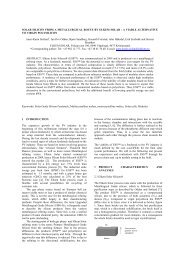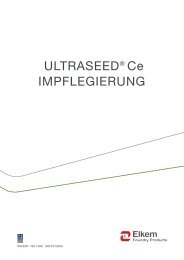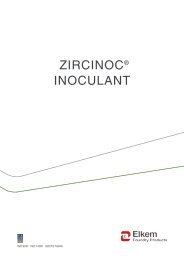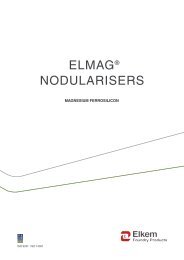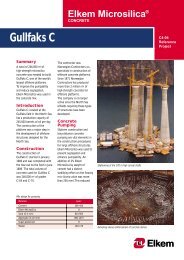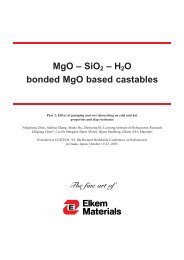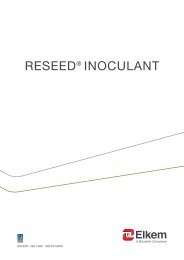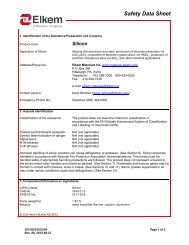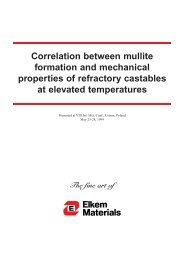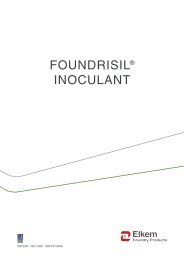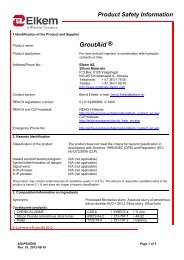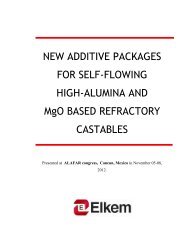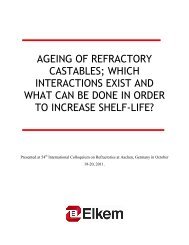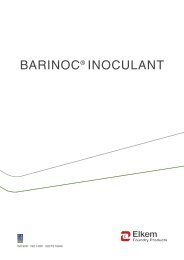You also want an ePaper? Increase the reach of your titles
YUMPU automatically turns print PDFs into web optimized ePapers that Google loves.
hot-M.O.R [MPa]<br />
20<br />
18<br />
16<br />
14<br />
12<br />
10<br />
8<br />
6<br />
4<br />
2<br />
0<br />
0 5 10 15 20 25 30<br />
Time [h]<br />
6%MS, 6% cem. 1200°C<br />
6%MS, 6%cem, 1300°C<br />
8%MS,2.5%cem, 1200°C<br />
8%MS, 2.5%cem, 1300°C<br />
Figure 11: Bauxite-based refractory castables. Hot-M.O.R. as a function of time.<br />
After 24 hours pre-firing, much of the mullitization is considered completed. Figure 12 shows<br />
the hot-M.O.R. of bauxite castables with 3, 6 and 9% microsilica at 6% cement and also one<br />
with 8% microsilica and 2.5% cement as a function of temperature (composition is given in<br />
Table 3 in the Appendix ). The choice of 6% cement in combination with 6% microsilica is<br />
indeed not the best if the hot-strengths shown in Figure 12 are examined. Unless more than<br />
6% microsilica is used, there are no signs of the characteristic strengthening by mullitization.<br />
This is in accordance with the mechanism sketched for the white fused alumina-based<br />
compositions described earlier in this presentation, but as mentioned earlier, some 100°C<br />
lower than in a pure system. The best results are again obtained by a lowering of the cement<br />
content, while maintaining a relatively high microsilica level. Here 2.5% cement together with<br />
8% microsilica was used.<br />
<strong>Elkem</strong> Materials – page 15



